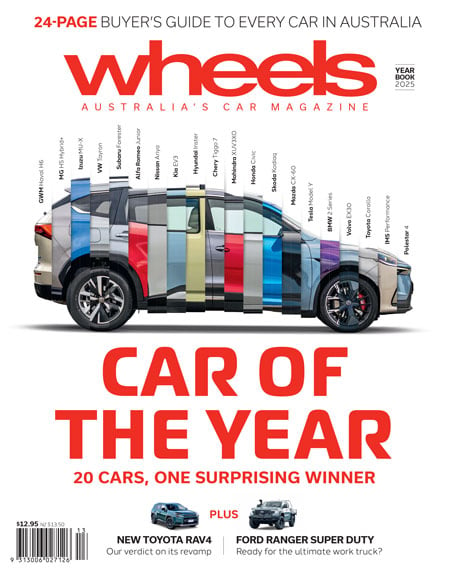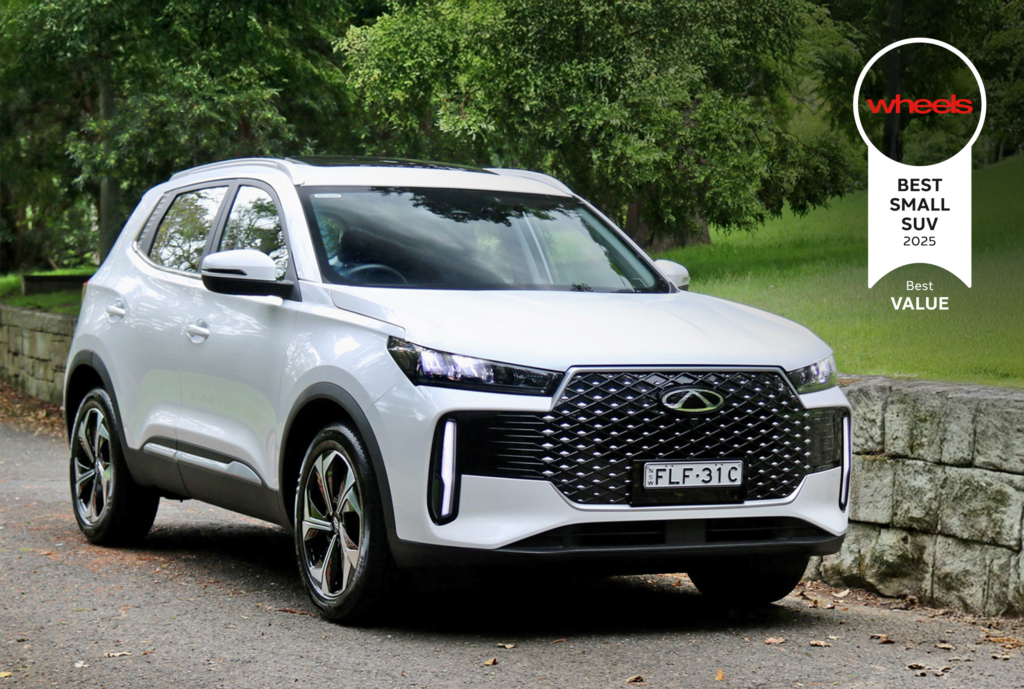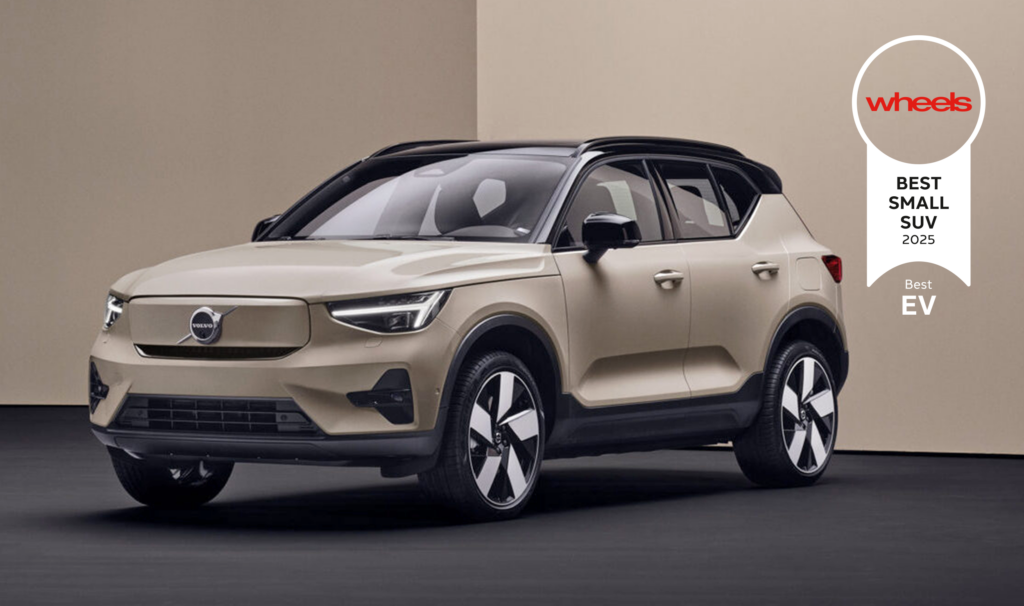The Contenders
- Lexus LBX
- Volvo EX40 (formerly XC40 Recharge)
- Audi Q3
- Audi Q4 e-tron
- BMW X1/iX1
- Volvo EX30
- VW T-Roc R
- Smart #1 and #3
- Range Rover Evoque
- Kia Niro
- Lexus UX
- Mercedes-Benz GLA/EQA, GLB/EQB
- Cupra Formentor
- Hyundai Kona Electric
Winner: Lexus LBX

- Price: From $47,550 plus on-road costs (Luxury)
- Drivetrain: 1.5L 3-cylinder hybrid, 100kW, CVT auto
- Combined fuel economy, CO2 emissions, fuel type: 3.8L/100km, 85g/km, 91RON
- Warranty: 5-year/unlimited km, 5-year roadside assistance
- Five-year service plan cost: $2,975 ($595 per service)
| Driving | |
|---|---|
| Interior | |
| Practicality | |
| Overall value |
Things we like
- Handsome and cute styling
- Awesome efficiency
- Fun to drive, good handling
Not so much
- Not cheap to buy or service
- Small rear seat, small boot
- Top spec model misses out on features like a sunroof
The Lexus LBX is the brand’s smallest ever product. Sitting underneath the already-small UX, the LBX is short for “Lexus Breakthrough Crossover” and is heavily based on the Toyota Yaris Cross, though has completely bespoke styling and a new interior compared with its cheaper cousin. The LBX’s cabin quality is generally quite good with ample soft touch materials, and higher quality screens than the Yaris Cross.
The rear seat, however, is small and while the front-drive model’s 402-litre boot is larger than you’d expect, the all-wheel drive reduces that to just 315L. Still, you can tell Lexus tried hard to make the LBX’s cabin as practical as possible and it features plenty of storage space, including an under-dashboard tray and door bins that can hold 600ml bottles. The rear seat also includes two USB-C chargers.
There are two trim levels of LBX offered in Australia for now, with the 100kW 1.5-litre four-cylinder hybrid drivetrain common to both – the top-spec Sports Luxury can be optionally had with all-wheel drive as well. A fire-breathing LBX Morizo – with the same turbocharged 1.6-litre petrol drivetrain as the GR Yaris – is due locally later this year.
As we’ve seen from most other new Toyota and Lexus products over the past decade, the LBX’s driving experience is better than you might expect. It’s fun to drive and encourages you to drive it harder, while it’s also very easy to manoeuvre at lower speeds. The ride quality is a bit unsettled at lower speeds, but as you’d expect for a Lexus, it’s still quite comfortable.
If its size suits you, the Lexus LBX is a good option to consider in the small SUV segment. Based on the already well-rounded Yaris Cross, the LBX adds more refinement, more luxury feel, more features and is even better to drive. Like the Yaris Cross, it’s super practical and its hybrid drivetrain is very fuel efficient. It predictably costs more to buy and service, but against premium rivals, remains good value for money.
Volvo EX40 (formerly XC40 Recharge)

- Price: From $76,990 plus on-road costs (Ultra Single Motor)
- Drivetrain: 185kW/420Nm (single motor) or 300kW/670Nm (dual motor), 82kWh battery
- NEDC range, peak charging speed: 485-520km, 135kW (single motor) – 200kW (dual motor)
- Warranty: 5-year/unlimited km, 8-year/160,000km for the battery, five years of roadside assistance
- Five-year service cost: Included in the cost of the car
| Driving | |
|---|---|
| Interior | |
| Practicality | |
| Overall value |
Things we like
- Excellent performance
- Good quality and practical cabin
- Lots of standard equipment
Not so much
- Expensive starting price
- Little personalisation
- Can be energy hungry
The Volvo EX40, formerly known as the XC40 Recharge, is larger than the small EX30 and is almost mid-sized in its dimensions. The interior practicality – as you’d expect for a Volvo – is excellent with a spacious rear seat and boot that make it one of the most practical small SUVs on the market.
Starting at $76,990 plus on-road costs, the EX40 is not cheap to buy but Volvo recently made more equipment standard on the entry-level single motor variant, matching the formerly-upper-spec dual-motor car.
Inside the EX40 is a long list of standard equipment, and excellent quality as well – as you’d expect from this brand. There are plenty of practical touches like big door bins and a big central storage system, while the 410-litre boot is larger than you might expect in person.
Although the ride quality can be a bit sharp thanks to the standard 20-inch wheels, the EX40 is still an impressive drive. It’s comfortable but can also be fun as well. Even the 185kW single motor variant is quick, but the 300kW twin motor definitely pushes you back in your seat. The EX40’s range is not amazing, however.
Like the smaller EX30, Volvo includes five years of servicing in the EX40’s price. Overall this is a stand-out in the segment – It’s handsome, practical, good to drive, well equipped and even though it’s on the pricier side, the long list of equipment helps to justify the cost.
Audi Q3
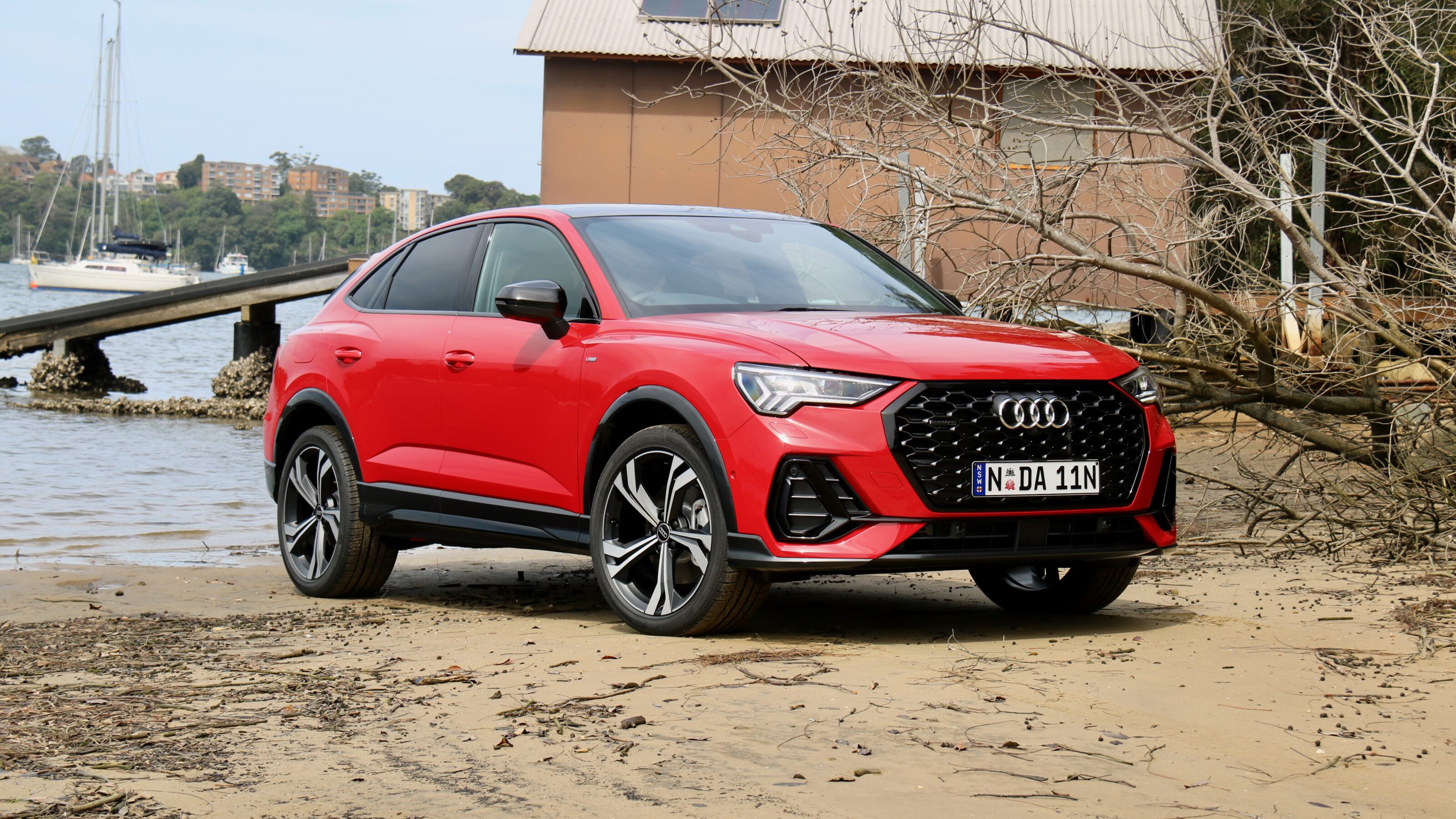
- Price: From $57,500 (35 TFSI, petrol)
- Drivetrain: 1.4L turbo petrol – 110kW/250Nm; and 2.0L turbo petrol – 132kW/320Nm
- Combined fuel economy, CO2 emissions, fuel type: 7.2L / 100km
- Warranty: 5 year, unlimited kilometre warranty
- Five-year service cost: $3,330 ($666 per year)
| Driving | |
|---|---|
| Interior | |
| Practicality | |
| Overall value |
Things we like
- Refined driving experience
- Stylish exterior
- Practical design for families
Not so much
- Fuel economy could be better
- Some cabin noise from road/wind
- Nice interior but limited space in the back
Competing with vehicles such as the Mercedes-Benz GLA, BMW X2 and Lexus UX, the Q3 has proved to be a popular five-seat compact luxury SUV in Australia, offered with 1.4-litre and 2.0-litre turbocharged petrol engines and a 2.0-litre turbo-diesel, and both front-wheel and all-wheel drive options.
Prices begin at $57,500 for the 35 TFSI up to $70,800 for the 40TFSI Quattro S Line, as well as two higher-powered version in the RS ($101,215) and RS Sportback ($104,215).
It should be noted a third-generation Q3 is expected in Australia within the next year, with a plug-in hybrid powertrain expected to be added to the petrol variants.
The cabin of the Q3 feels suitably premium but also understated, with soft-touch materials and a sleek 10.1-inch touchscreen multimedia system and 10.25-inch digital instrument cluster. Standard equipment for the current Audi Q3 range also includes leather upholstery, dual-zone climate control, satellite navigation, wireless Apple CarPlay, wired Android Auto, four USB-C ports, a wireless charging pad, reversing camera and front/rear parking sensors.
Additionally, the Q3 buyer gets 19-inch alloy wheels, space saver spare wheel, adaptive LED headlights, keyless entry and start, and a powered tailgate. Standard safety features on the Audi Q3 models include AEB, parking assist, collision warning, driver attention alert, lane keeping assist and more.Fuel economy differs from 7.2 litres per 100km on the combined cycle for the 35 TFSI, up to 8.9L/100km for the RS variants.
The Q3 comes with a five-year, unlimited kilometre warranty and has an ANCAP 5-star rating. It offers an engaging, composed and comfortable ride, with enough sprightliness to navigate urban traffic. It just needs a hybrid version now.
Audi Q4 e-tron
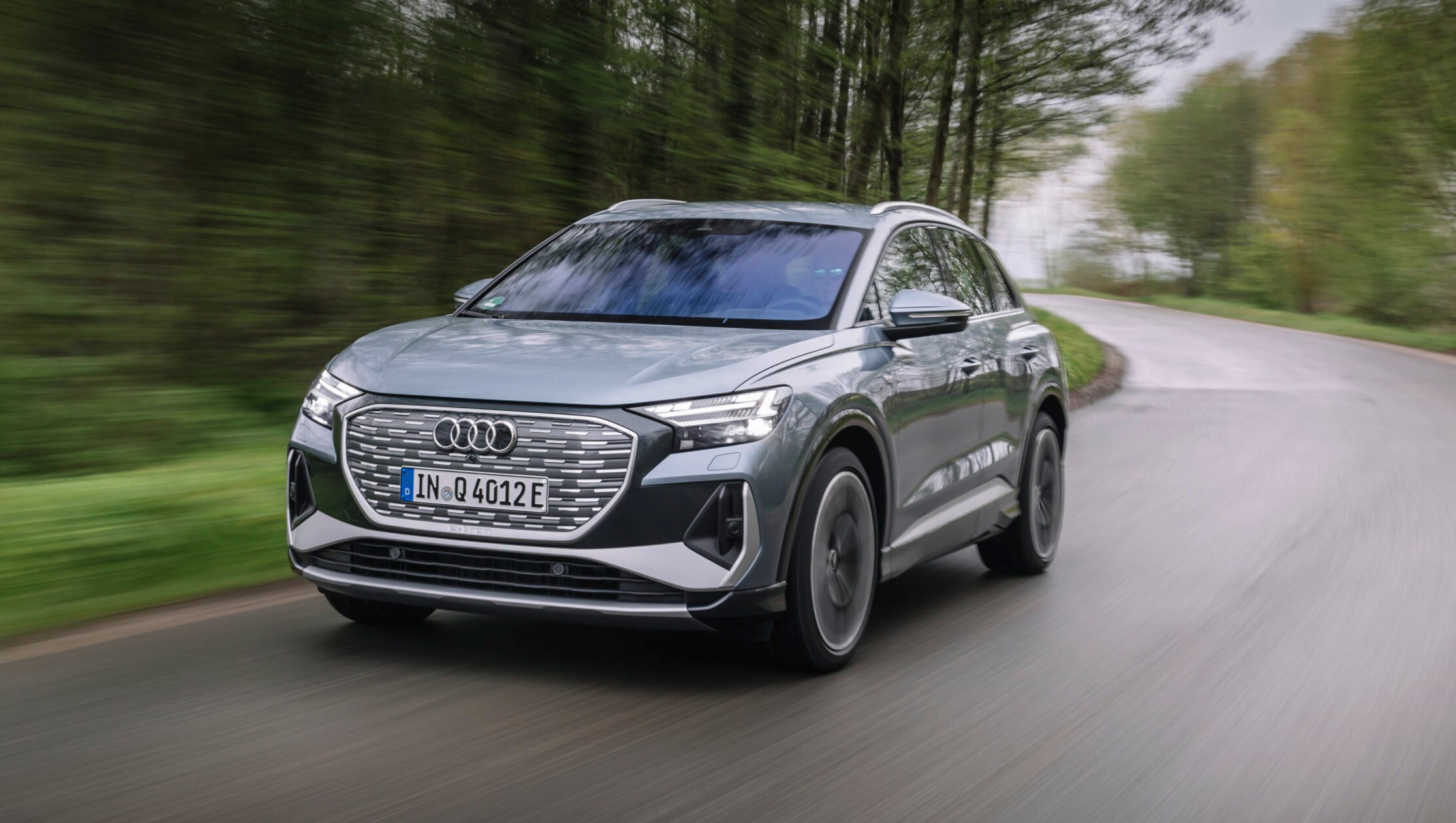
- Price: From $84,900 plus on-road costs (45 wagon)
- Drivetrain: 210kW/545Nm (45) or 250kW/134Nm + 545Nm (55) electric motor, 82kWh battery
- NEDC range, peak charging speed: 448-524km, 175kW
- Warranty: 5-year/unlimited km, 8-year/160,000km battery warranty, 5 years of roadside assistance
- Six-year service cost: $2,050 ($341 per year)
| Driving | |
|---|---|
| Interior | |
| Practicality | |
| Overall value |
Things we like
- Choice of bodystyles
- Practical cabin
- Good performance and range
Not so much
- Drum rear brakes
- Expensive option pricing
- Not cheap to buy
Using the same platform as cars like the Volkswagen ID.4 and Skoda Enyaq, the Audi Q4 e-tron is the brand’s entry level EV for now and is available in both traditional wagon and Sportback coupe bodystyles in Australia. Two variants are available in each bodystyle – 45 and 55 – and up to 524km of range.
The base Q4 e-tron 45 uses a 210kW/545Nm rear-mounted electric motor, while the 55 adds another motor on the front axle for a higher 250kW total output and quicker performance, though less range thanks to extra weight. Both can charge quickly at up to 175kW.
The cabin of the Q4 e-tron is well featured, comfortable and features a lot of technology, though the quality could be better. It’s practical and the rear seat – even in the sloping roofed Sportback – can handle taller adults fine. The Sportback strangely has more bootspace than the wagon at 535 litres (versus 520L), which is healthy for the segment.
Audi covers the Q4 e-tron with a five-year warranty with five years of roadside assistance, while a six-year service plan costs just $2,050. Overall, the Q4 e-tron is a solid entrant as the brand’s smallest EV yet. It’s not cheap to buy and there are still some option packages available but the fundamentals are solid: it drives well, it’s practical and it charges quickly.
BMW X1/iX1

- Price: From $80,600 plus on-road costs drive away (eDrive20)
- Drivetrain: 150kW/250Nm (eDrive20) or 230kW/494Nm (xDrive30) electric motor, 66.5kWh battery
- NEDC range, peak charging speed: 400-464km, 130kW
- Warranty: 5-year/200,000km, 8-year/160,000km battery warranty, 3 years of roadside assistance
- Six-year service cost: $2,250 ($375 per year)
| Driving | |
|---|---|
| Interior | |
| Practicality | |
| Overall value |
Things we like
- Good value for money
- Good quality and practical cabin
- Lots of standard equipment
Not so much
- Not much choice
- Most functions controlled through touchscreen
- No spare wheel
An electric version of BMW’s smallest SUV, the X1, the BMW iX1 is very hard to distinguish from its ICE sibling: the wheels and grilles are the biggest clue. But like the regular X1, the iX1 presents a strong all-rounder for the small electric SUV segment thanks to its good driving experience, excellent quality and very practical cabin and good range.
Inside the iX1 is identical to the X1 with excellent quality materials and plenty of technology. Unlike larger BMW models, the centre display is only a touchscreen, which can be less helpful at speed as the screen’s menu structure can be a bit confusing. But the system is fully featured and quite quick, plus the screen quality is excellent.
As we saw with the X1, the iX1’s cabin is quite practical with big door bins, a funky centre console bridge and a huge back seat that two tall adults would be quite comfortable sitting in. The boot measures a large for the segment 490 litres – that’s 50L less than the X1 but still a good size.
On the road, the iX1 presents good driving dynamics, a well-tuned ride quality and ample performance. Its range is reasonable, though its peak charging speed could be improved. Its active safety features are excellent, however.
In summary, the BMW iX1 is a strong contender for best electric small SUV. It’s not cheap to buy, but is a well-rounded product that deserves strong consideration thanks to its practicality, good range and performance, long list of standard equipment and well-tuned safety features.
Volvo EX30
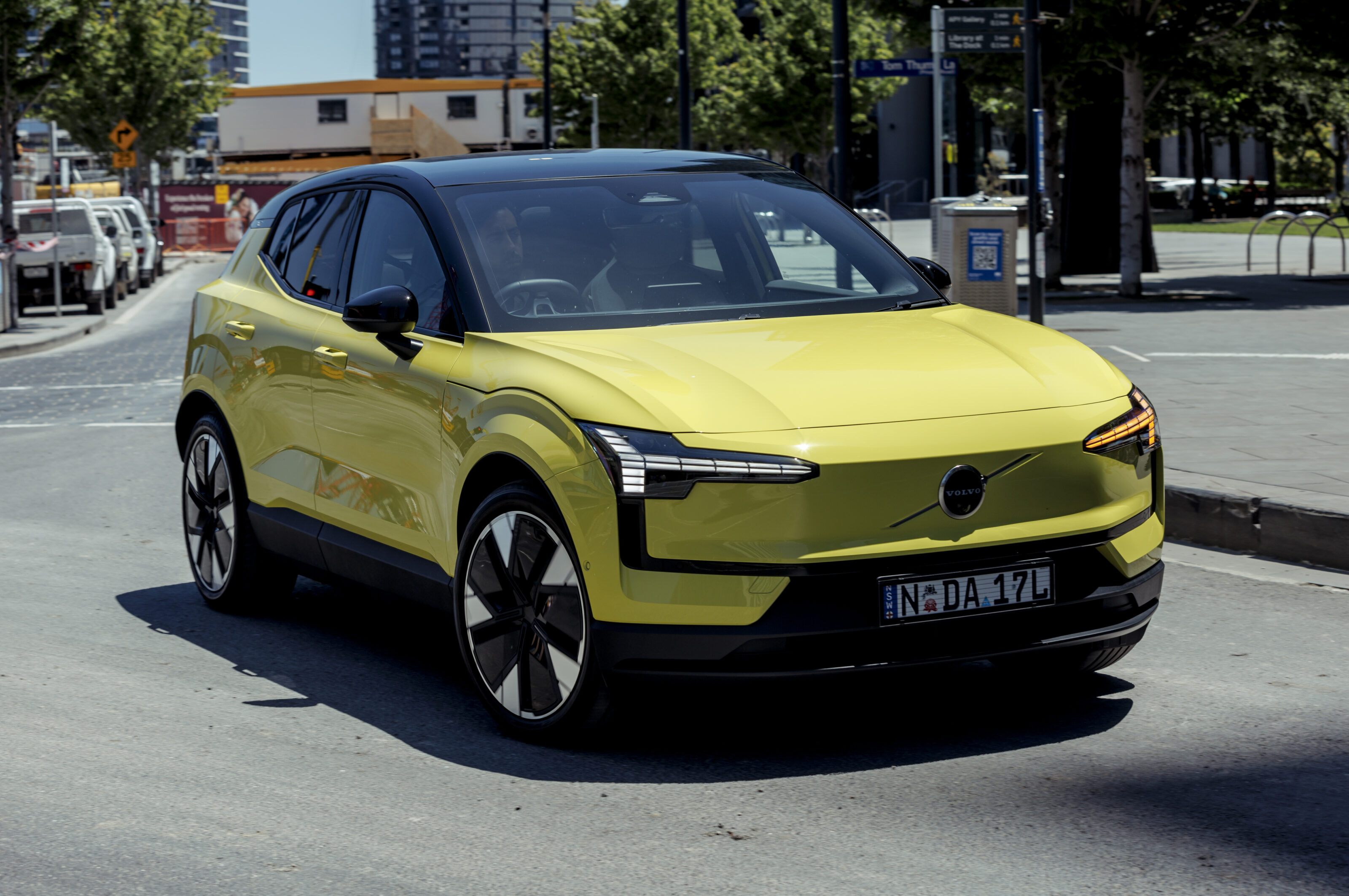
- Price: From $59,990 plus on-road costs (Plus)
- Drivetrain: 200kW/343Nm (single motor) or 315kW/543Nm (dual motor) electric motor, 69kWh battery
- NEDC range, peak charging speed: 445-462km, 153kW
- Warranty: 5-year/unlimited km, 8-year/160,000km for the battery, five years of roadside assistance
- Five-year service cost: Included in the cost of the car
| Driving | |
|---|---|
| Interior | |
| Practicality | |
| Overall value |
Things we like
- Fun to drive and fast
- Stylish, minimalist interior
- Lots of standard equipment
Not so much
- Almost every function is in the touchscreen
- Surprisingly firm ride quality
- Practical but still small
The Volvo EX30 is the brand’s smallest product and rides on a new Geely-derived platform shared with the Smart #1 and #3 and Zeekr X, and all three share the same motors and batteries. Peak charging speed is a healthy 150kW, while the 66kWh battery should allow for up to 462km of range, which is also healthy.
Inside the EX30 is compact but more practical than you might imagine. Two six-foot adults will just about fit in the rear seat with just enough legroom and headroom for taller folk, though the 318-litre boot is not huge. Quality is solid with lots of sustainable materials used throughout the cabin.
Centre of the cabin is a 12.3-inch touchscreen that controls almost every function of the car with very little in the way of buttons – there isn’t even a driver’s display to show the car’s speed, like in a Tesla. The touchscreen itself is quick to use and the display is bright, but it could be easier to use and functions such as the headlights and mirrors are buried within.
The driving experience of the EX30 is fun though some might find its ride quality to be a bit firm. Even the entry-level model is more than fast enough with 200kW of power and a quick 5.3-second 0-100km/h sprint time – the top-spec dual-motors making 315kW of power ensure it’s easily the fastest car in the segment (alongside its Smart and Zeekr cousins, which use the same motors).
The EX30’s aftersales package is good with a five-year service plan included in the price and two-year service intervals, making the EX30 pretty painless from an ownership point of view. Overall, the Volvo EX30 is a strong entrant into the electric small SUV segment – if you don’t need the largest or most practical product.
Volkswagen T-Roc R
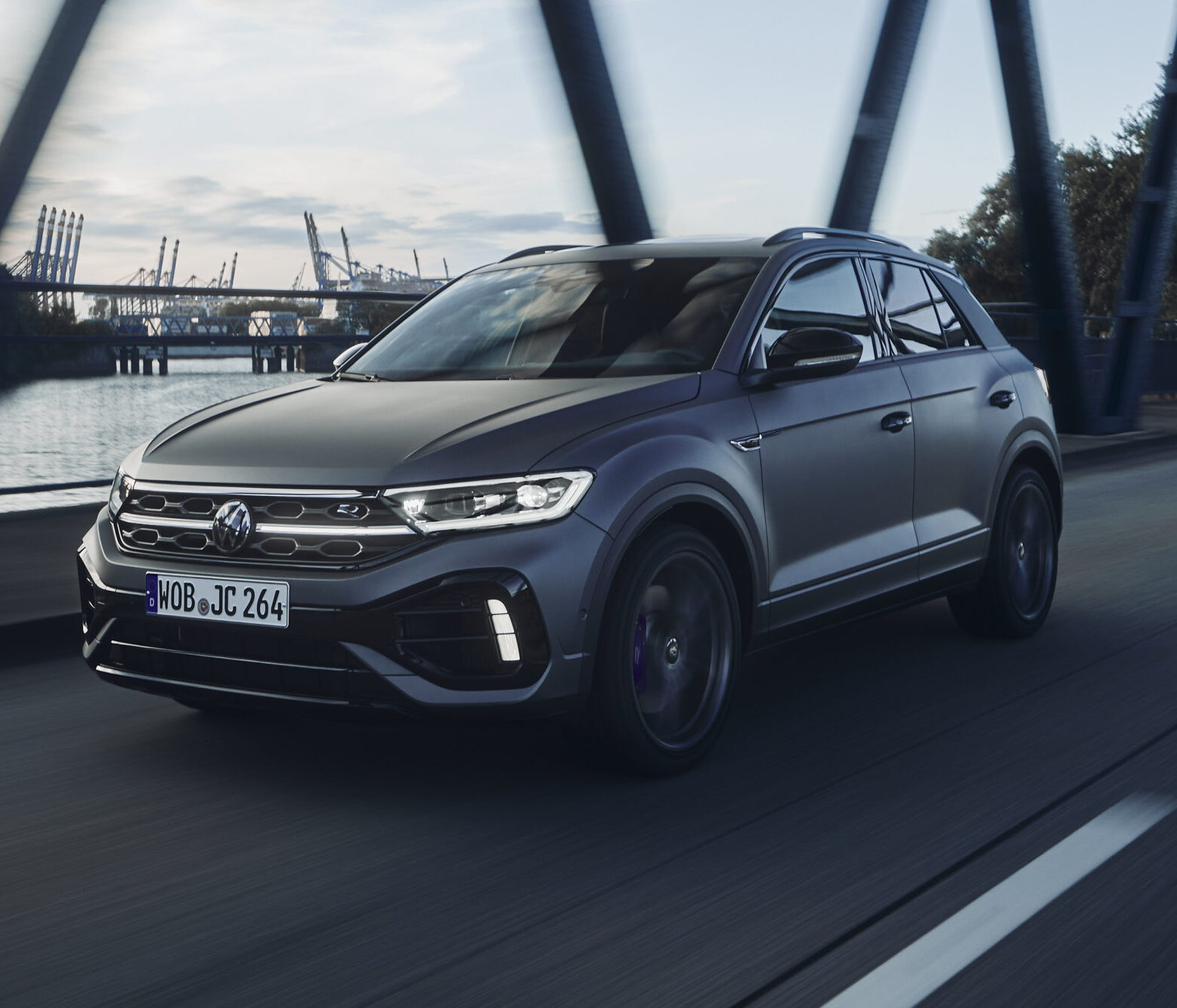
- Price: From $64,990 plus on-road costs
- Drivetrain: 2.0L 4-cylinder turbo petrol, 221kW/400Nm, 7-speed dual-clutch auto, AWD
- Combined fuel economy, CO2 emissions, fuel type: 8.3L/100km, 189g/km, 98RON
- Warranty: Five-year/unlimited km
- Five-year service cost: $3,385 ($677 per service, service pack) – $4,025 ($805 per service, PAYG)
| Driving | |
|---|---|
| Interior | |
| Practicality | |
| Overall value |
Things we like
- A great all-rounder in typical VW fashion
- Punchy engine
- Well equipped
Not so much
- Expensive service pricing
- Dark interior
- Indecisive dual-clutch auto
A previous winner of Wheels Best Small SUV in 2023, the Volkswagen T-Roc has a lot going for it and in typical Volkswagen fashion, is a great all-rounder. With almost 8,000 sold in 2024, the T-Roc was the brand’s best-selling vehicle behind only the Amarok ute, and it’s easy to see why.
With pricing starting at $64,990 plus on-road costs with a recent equipment upgrade across the range, the T-Roc R has a lot of appeal sitting atop the model’s local range, The R adds sporty new features to the range like a 221kW/400Nm 2.0-litre turbo-petrol engine and a number of sporty details like a lot of R badging and sportier exterior styling.
Regardless of model chosen, the T-Roc’s quality is solid and it’s practical as well, with plenty of interior storage space. Though the interior is dark and not as airy as a Hyundai Kona, it’s still spacious enough for four adults. The infotainment systems are a breeze to use and unlike some rivals, the physical AC controls are ergonomically excellent. The 445-litre boot is large for the segment, and opens up to almost 1,300L with the rear seats folded.
The driving experience of the T-Roc is mature, as you’d expect for a Volkswagen, but in R form it’s also feisty and fun. The R’s 4.9-second 0-100km/h sprint time is evidence of that. The base models are relaxing to drive, but can put a smile on your face, a smile that will grow to a grin with the R-Line and R – this is a fun small SUV to drive, and the engines can be efficient.
Where the T-Roc range does fall a bit short is with service costs: up to $805 annually is more than double that of some rivals. But overall, the T-Roc is typically Volkswagen: mature, refined, nice to drive, practical and good quality and the R is faster, more fun and sexier.
Smart #1 and #3

- Price: From $54,900 plus on-road costs (#1), $57,900 +ORC (#3)
- Drivetrain: 200kW/343Nm (Pro+ and Premium) or 315kW/543Nm (Brabus) electric motor, 66kWh battery
- WLTP range, peak charging speed: 400-455km, 150kW
- Warranty: 5-year/130,000km, 8-year/150,000km warranty, 5 years of roadside assistance
- Four-year service cost: $2,445–$3,120 ($611–$780 per year)
| Driving | |
|---|---|
| Interior | |
| Practicality | |
| Overall value |
Things we like
- Solid value for money
- Fun driving experience
- Lots of standard equipment
Not so much
- Lacklustre warranty, expensive servicing
- Boots of both the #1 and #3 not huge
- Complicated touchscreen
While the Smart brand gives memories of tiny city cars that can park perpendicular to the kerb, these days the brand is about electric small SUVs and both of its models – the #1 (pictured) and #3 – fit into that category. Using the same platform, mechanicals and interior design, the #1 is slightly shorter but taller than the coupe-like #3.
Both offer two powertrains that are also used in the Volvo EX30 and Zeekr X: either a 200kW single-motor unit or a 315kW dual-motor set up that uses the famous Brabus name. All #1s and #3s drive quite well – they’re a bit softer than the EX30 and are all the better for it because they still handle well, but are more comfortable.
The Smart twins also have higher quality, more user-friendly interiors than the Volvo, with more liberal use of soft-touch plastics and more screens, including both a digital driver’s display and a head-up display – both of which the EX30 lacks. Their back seats are also larger than the Volvo, while the #3’s boot in particular is big for its size.
As with its platform mates, the Smart twins’ peak charging speed is healthy, and the efficiency of the single motor variants in particular is good – the Brabus can be a bit energy hungry, reducing its range. The service costs for both models are expensive as well.
But overall, while they’re not quite as quirky as the original Smarts from the early 2000s, they have character in an often bland part of the market. They’re also good value for money, and drive well too. Really, the only potential issues are the expensive servicing and the complicated touchscreen – but other than that, the new Smart range is definitely worth consideration.
Range Rover Evoque

- Price: From $78,031 plus on-road costs (P250 SE)
- Drivetrain: 2.0L 4-cylinder (184kW/365Nm) or 1.5L turbo 3-cylinder plug-in hybrid (227kW/540Nm), 8- or 9-speed auto
- Combined fuel economy, CO2 emissions, fuel type: 2.1-8.3L/100km, 48g-191/km, 95RON
- Warranty: 5-year/unlimited km, 5-year roadside assistance
- Five-year service plan cost: $2,100 ($420 per service)
| Driving | |
|---|---|
| Interior | |
| Practicality | |
| Overall value |
Things we like
- Punchy drivetrains
- Excellent cabin quality
- Surprisingly thrifty to service
Not so much
- PHEV drivetrain is expensive
- Still quite a lot of optional extras to choose from
- PHEV drivetrain only available in higher models
Since the first-generation model went on sale in 2011, the Range Rover Evoque can only be regarded as a success, having sold over one million units. Buyers clearly wanted the luxury feel they’d expect from the Range Rover brand but in a smaller package.
Fast forward almost 15 years and now we’re seeing Evoque generation two, which grew slightly in dimensions compared with generation one, but is even more luxurious inside. Thankfully, too, Land Rover significantly simplified the Evoque’s lineup – at launch in 2020, there were 26 individual variants to choose from but now there are just five: the ‘P250’ petrol engine in SE, HSE or Autobiography specs, and the ‘P300e’ PHEV drivetrain in either HSE or Autobiography. Simple.
The PHEV drivetrain combines a turbocharged 1.5-litre three-cylinder petrol engine with an 85kW electric motor that draws power from a 15kWh battery, giving a WLTP-rated electric range of 62km. Combined with the petrol engine, the Evoque P300e makes 227kW/540Nm, comfortably more than the 184kW/365Nm 2.0-litre turbo-petrol engine. The Evoque’s driving experience is very comfortable and it handles pretty well too.
Inside the Evoque is a quality cabin with lots of exotic materials and big screens that are easy to use. The seats are very comfortable, and the back seat is also reasonably spacious too given the Evoque’s smaller dimensions – two six-footers will be fine. The Evoque’s 472-litre boot is good for its size, though it only opens up to 1,156L with the rear seats folded.
The Evoque still provides a comfortable and luxurious entrant to the Range Rover line-up. It uses a powerful, refined and efficient plug-in hybrid that offers a good all-electric range, it drives well and its cabin quality is excellent. The boot could be larger, however, and it’s also more expensive than it used to be, while still too many features remain optional. But get past those issues and there’s a lot to like about the Evoque.
Kia Niro
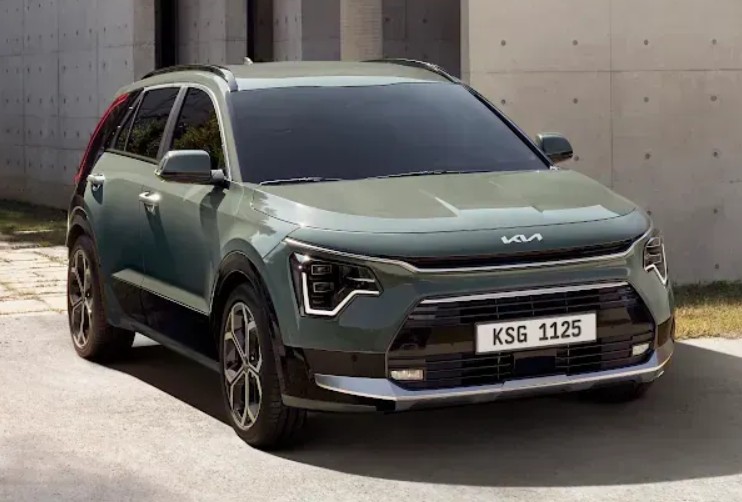
- Price: From $45,000 plus on-road costs (S) or $66,590 plus on-road costs (EV S)
- Drivetrain: 1.6L 4-cylinder hybrid, 104kW/265Nm, 6-speed dual-clutch auto or 150kW/255Nm electric motor, 64.8kWh battery
- Combined fuel economy, CO2 emissions, fuel type: 4.0L/100km, 91g/km, 91RON
- EV WLTP range, peak charging speed: 460km, 85kW
- Warranty: 7-year/unlimited km, 8-year/160,000km battery warranty, 12 months’ assistance extendable with dealer servicing up to eight years in total
- Five-year service cost: $1,351 ($270 per year) – $2,849 ($569 per year)
| Driving | |
|---|---|
| Interior | |
| Practicality | |
| Overall value |
Things we like
- Handsome styling
- Hybrid drivetrain works well
- Good to drive with a great ride
Not so much
- Expensive across the range
- Expensive to service as well
- Cheaper non-hybrid Seltos is more practical
The Kia Niro is the brand’s unique hybrid and electric small SUV that differs from the larger, cheaper and petrol-only Seltos. Priced from $45,000 plus on-road costs in hybrid and $66,590 +ORC in EV forms, the Niro is available in either base S or top-spec GT-Line form. Both the S and GT-Line are relatively well equipped, though the S still lacks features like a leather steering wheel or LED headlights, making the $5,650 jump to the GT-Line worth it in our view.
The cabin of the Niro is funky and much better quality than the basic Seltos’ cabin, with more soft touch surfaces keeping with its more expensive pricing and higher-tech drivetrains. Its front cabin is also more practical than the Seltos with lots of storage, though the rear seat and boot aren’t quite as large. Measuring 425 litres with the seats up, the Niro’s boot is average in size.
On the road, the Niro range shows off its Australian-tuned suspension with excellent ride and handling that shames a lot of competitors. The hybrid drivetrain isn’t the quickest, but has more than enough grunt for most buyers. Helping the drivetrain is a six-speed dual-clutch automatic transmission that differs from rivals as it’s not a CVT, but that makes it feel more natural.
Kia’s industry coverage is above average in this company, though the hybrid’s service pricing is expensive at almost $570 per year (more than double that of the Niro EV). Thankfully, its real world low fuel usage will help pay for that, but it should be cheaper to own.
The Kia Niro has a lot going for it, including a handsome design, practical and tech-filled cabin, a peppy and efficient drivetrain and a long warranty. Counting against it is its expensive pricing, expensive service costs and that its ICE-powered Seltos sibling – let alone that the Hyundai Kona Hybrid that it shares so much with under the skin – is less expensive to buy.
Lexus UX
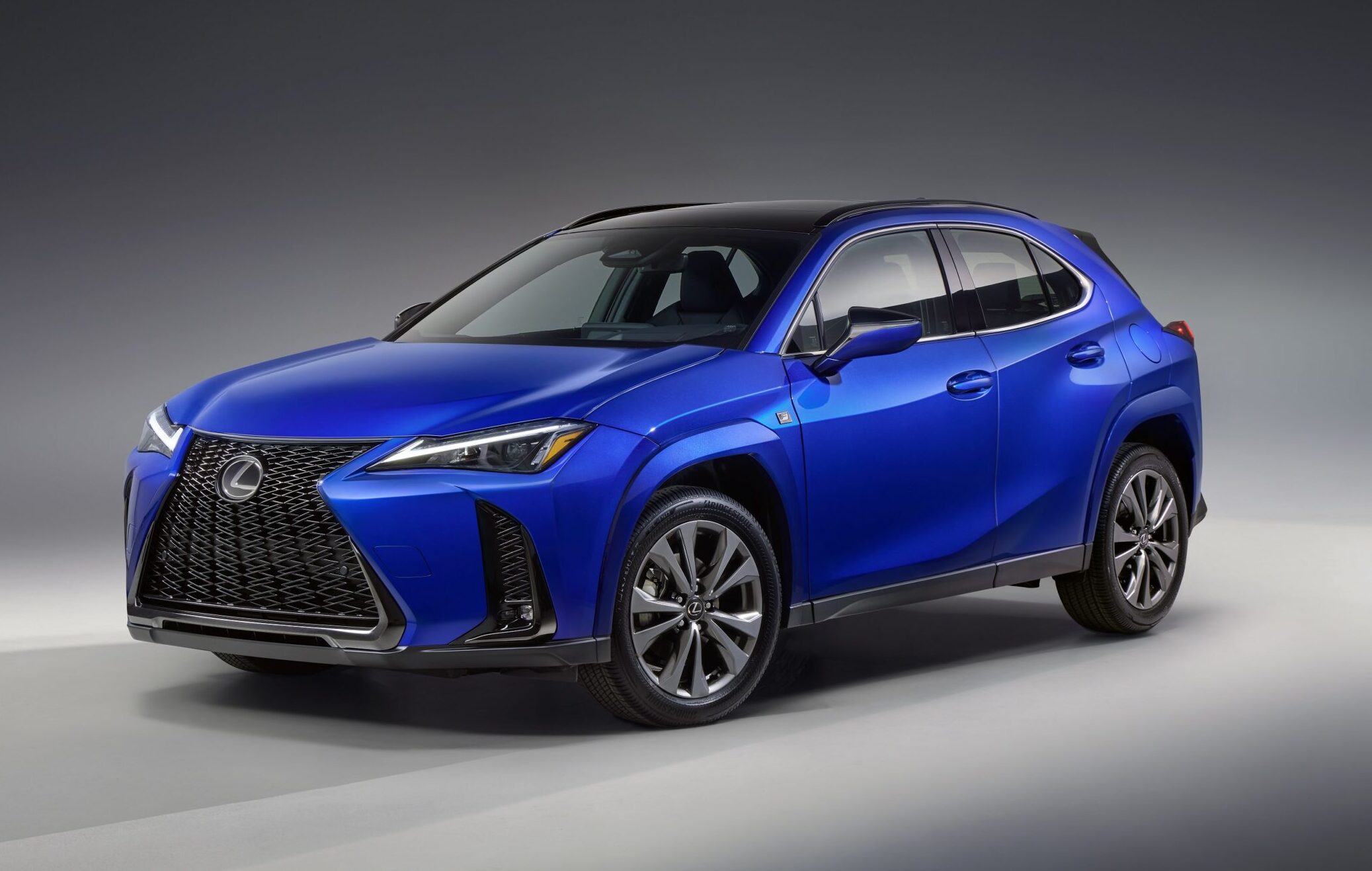
- Price: From $55,370 plus on-road costs (Luxury)
- Drivetrain: 2.0L 4-cylinder hybrid, 146kW, CVT auto
- Combined fuel economy, CO2 emissions, fuel type: 4.2L/100km (2WD)-4.4L/100km (AWD), 99g/km, 91RON
- Warranty: 5-year/unlimited km, 5-year roadside assistance
- Five-year service plan cost: $2,975 ($595 per service)
| Driving | |
|---|---|
| Interior | |
| Practicality | |
| Overall value |
Things we like
- Recently upgraded drivetrain stronger yet more efficient
- Excellent interior quality
- Nice to drive – comfortable and fun
Not so much
- Cramped rear seat and boot
- Gets expensive at the top of the range
- Enhancement packages should be standard
The Lexus UX was the brand’s first properly small SUV when it went on sale locally in 2018. Using the then-new TNGA platform from parent company Toyota that revolutionised the way its products rode and handled, the UX was a great preview to the company’s next-generation cars.
Some seven years later, the UX has recently been updated with a more powerful and more efficient hybrid drivetrain and new interior tech such as a brand new infotainment system. Making a powerful 146kW of power, the base UX is now badged ‘300h’ thanks to its power increase from the former UX250h. Yet its fuel efficiency dropped to just 4.2L/100km, a figure that’s fairly easy to achieve in the real world.
As we’ve seen in various other Lexus and Toyota products, the use of the TNGA platform delivers a more than proficient ride and handling. It’s very comfortable, but keen drivers will appreciate how fun it can be from behind the wheel.
The cabin of the UX is excellent quality with plenty of soft touch materials, even on the entry-level UX Luxury. Move up the range to the Sports Luxury or F Sport and even more luxury features like full leather trim and a ‘Kashoku’ door garnish are added for a bespoke feel. The new 12.3-inch touchscreen system is a big step forward on the screen in the pre-updated model too – it’s much faster to use and is equipped with more features.
If there is a downside to the UX’s cabin it’s that it doesn’t feel very spacious. The smaller Audi Q2, for example, offers more rear space than the UX. In front-drive form, the UX’s 368-litre boot is smaller than even the smaller LBX and the high floor means that it isn’t that practical. But there’s still plenty to like about the Lexus UX like its lovely driving experience, quality cabin and very efficient drivetrain.
Mercedes-Benz GLA/EQA, GLB/EQB
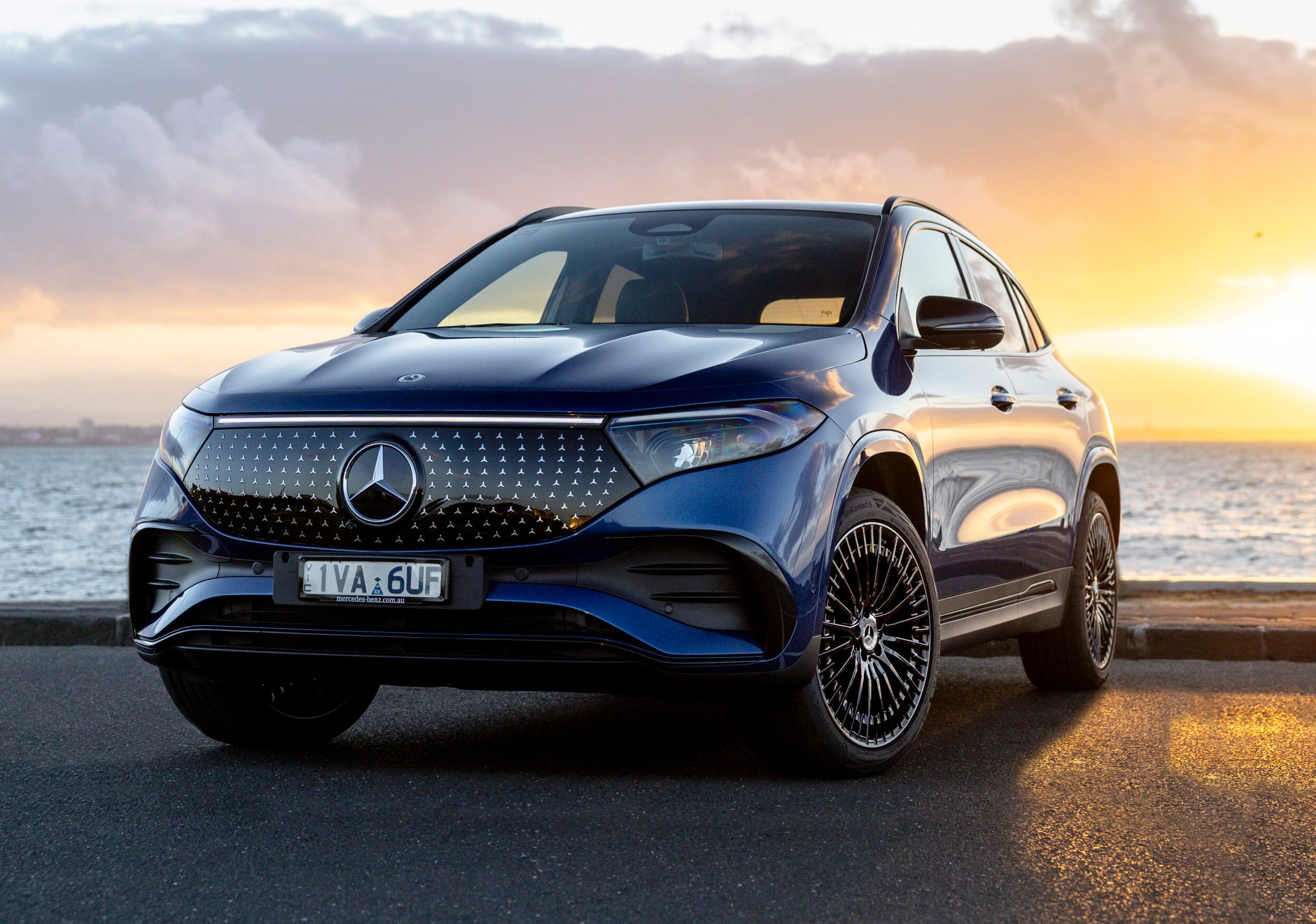
- Price: From $63,600 plus on-road costs (GLA)
- Drivetrain: 1.3L turbo (120kW/270Nm) or 2.0L turbo petrol (250: 165kW/260Nm, AMG 35: 225kW/400Nm), 140kW/375Nm electric motor, 70.5kWh battery (EQ)
- Combined fuel economy, CO2 emissions, fuel type: 7.4L/100km – 9.1L/100km, 167-207g/km, 98RON
- WLTP range, peak charging speed (EQ): 564-578km, 100kW
- Warranty: 5-year/unlimited km, 8-year/160,000km battery warranty, 5 years roadside assistance
- Six-year service cost: $2,650 ($530 per year)
| Driving | |
|---|---|
| Interior | |
| Practicality | |
| Overall value |
Things we like
- Good range and performance
- Good quality and practical cabin
- Lots of standard equipment
Not so much
- Expensive to service
- GLB/EQB’s third row is small
- Slow peak charging speed for EQs
So far a big success for the brand, the Mercedes-Benz GLA and GLB – and their electric EQA and EQB siblings – are offered in a wide range with four petrol variants including 200, 250, AMG 35 and AMG 45 (GLA only) models, while the electric versions offer just a single ‘250+’ spec with up to 578km of range from a charge, which is healthy in the segment. Peak charging is 100kW, which is not that fast, but the range should reduce the need to visit a charger.
On the road, both the models impress with a refined and enjoyable driving experience just as you’d expect from the Mercedes-Benz brand. While neither are the last word in sportiness, they are quite comfortable.
Inside is a modern cabin that features funky ambient lighting, bright screens and high quality finishing throughout. Uniquely in the segment too, the GLB and EQB feature seven seats – though the third row is definitely best described as kid-only. Fold the third row down and you get a healthy 495-litre bootspace, which is much larger than the 340L boot in the EQA.
As you’d expect though, both the models aren’t cheap to buy or maintain with the entry-level BMW iX1 around $5,000 less expensive and both quicker and faster charging. In addition to that, Merc’s servicing pricing is expensive at over $500 annually.
But the Mercedes-Benz GLA, GLB, EQA and EQB still offer a lot to buyers like good performance and range, quality cabins with exotic features and good practicality. The price is a factor, of course, but doesn’t take away from the solid all-round ability of these SUVs.
Cupra Formentor
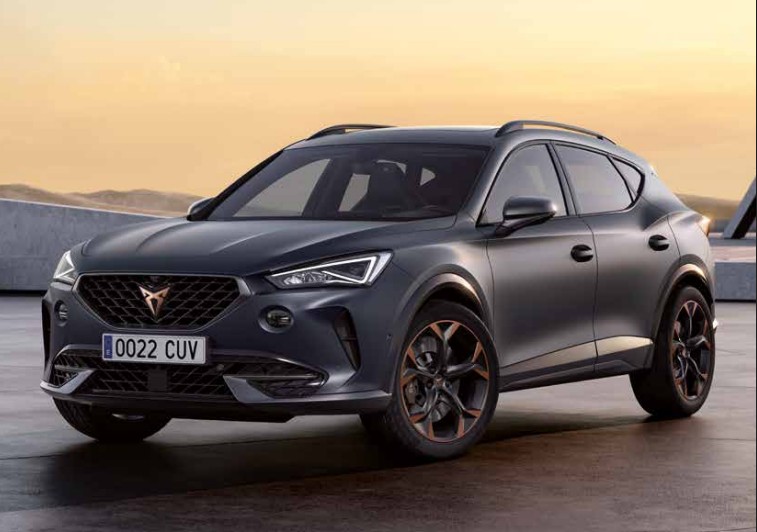
- Price: From $56,490 drive away
- Drivetrain: 2.0L 4-cylinder turbo-petrol (V: 140kW/320Nm, VZx: 228kW/400Nm) or 1.4L turbo 4-cylinder plug-in hybrid, 180kW/400Nm, 6- or 7-speed dual-clutch auto, FWD or AWD
- Combined fuel economy, CO2 emissions, fuel type: 1.9-7.7L/100km, 43-175g/km, 95/98RON
- Warranty: 5-year/unlimited km, 5-year roadside assistance
- Five-year service cost: $1,990 ($398 per service)
| Driving | |
|---|---|
| Interior | |
| Practicality | |
| Overall value |
Things we like
- Handsome styling
- Punchy drivetrains
- Fun to drive
Not so much
- PHEV battery reduces boot capacity and removes spare wheel
- Leather package should be standard
- Back seat not huge
Sexy Spanish Volkswagen Group offset Cupra has only joined the Australian new car market for a few years but it’s already offering a solid range of products. The Formentor is just one of them, combining a turbocharged either 2.0-litre (V, VZx) or 1.4-litre petrol engine with an electric motor (VZe PHEV). The VZe’s 12.8kWh battery allows for a claimed electric range of 58km.
The Formentor’s driving experience is great with a typically-VW Group solid feel from behind the wheel, though with extra fun and sharper handling. The ride is firm but still comfortable, and the rear visibility is good as well. The active safety features are impressively well tuned and not annoying.
The cabin of the Formentor is good quality, practical and full of tech like the large 12-inch touchscreen and 10.25-inch digital driver’s display with plenty of configurability. In-car storage is good, and while the rear seat could be larger, it’s still comfortable for two adults and features air vents, charging and even a separate climate zone.
Cupra covers its products with a five-year/unlimited km warranty with five years of roadside assistance. A five-year/75,000km service package costs a reasonable $1,990.
Overall, the Cupra Formentor impresses with its fun driving experience, its quality cabin, practicality, long equipment list and reasonable service pack pricing. While the rear seat and boot could be larger, it’s still worth of consideration if you’re after a hybrid small SUV.
Hyundai Kona Electric
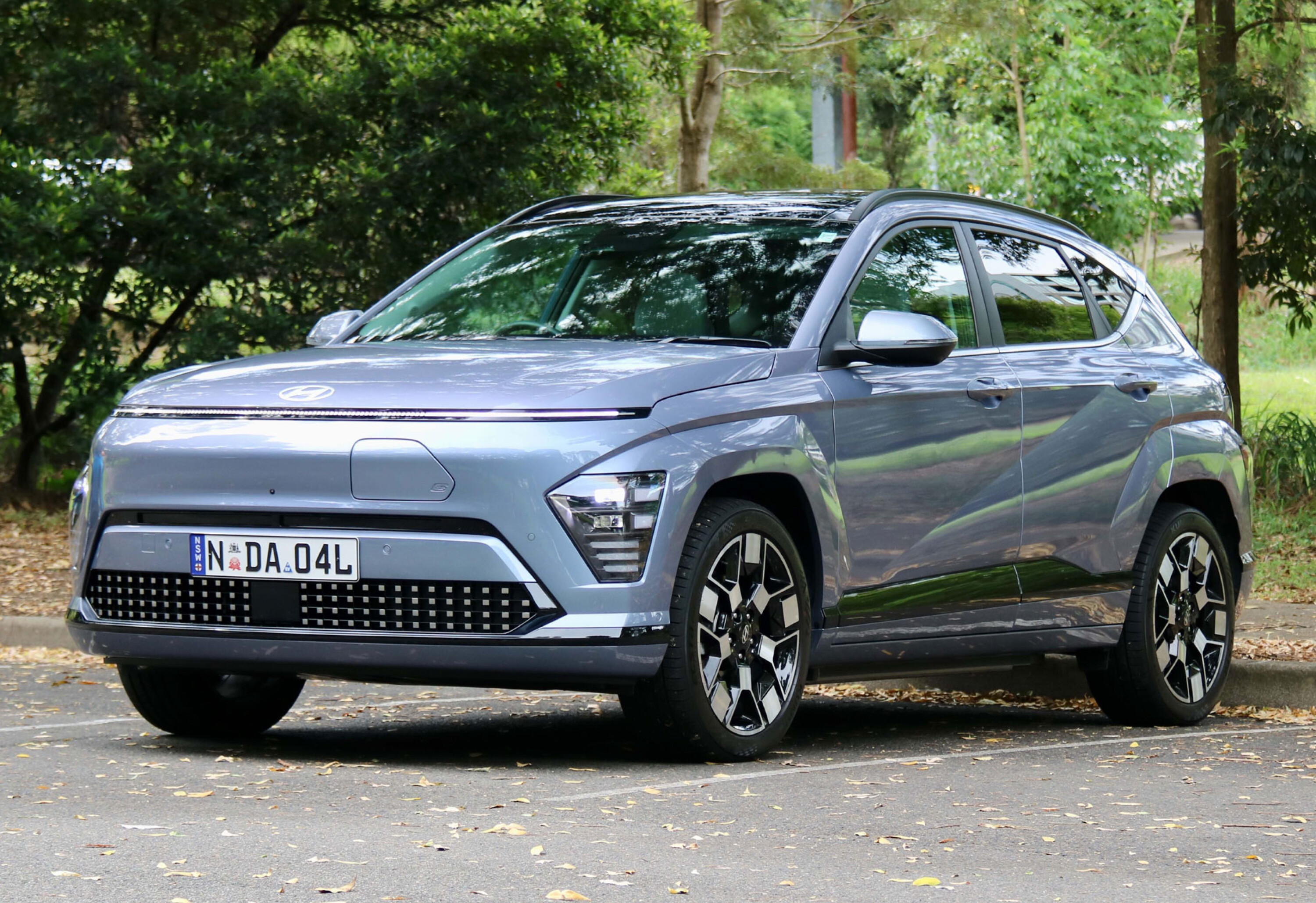
- Price: From $54,000 plus on-road costs (Standard Range)
- Drivetrain: 99kW/255Nm – 150kW/395Nm, 64.8kWh
- WLTP range, peak charging speed: 370-505km, 102kW
- Warranty: Five-year/unlimited km and 8-year/160,000km battery, 12 months’ roadside assistance added with each dealer service
- Four-year service cost: $1,040 ($260 per year)
| Driving | |
|---|---|
| Interior | |
| Practicality | |
| Overall value |
Things we like
- Wide range of variants
- More practical than the last Kona
- Well equipped across the range
Not so much
- Kona Electric is not cheap
- Cabin quality could be better
- Lots of features reserved for top-spec Premium
The second-generation Hyundai Kona has been on sale in Australia for over a year now and, like its predecessor, is proving popular with over 17,000 sold last year alone. The new Kona is larger, more mature, more refined and features an optional hybrid drivetrain for the first time locally, which we think is the model to choose.
Where the Kona has seen the biggest improvement is in its interior design as it’s now more up-to-date than the previous model, which felt dated in comparison with newer Hyundai vehicles. The Kona’s cabin could be better quality, but there’s no denying the awesome practicality and pleasing ergonomics throughout.
The rear seat of the new Kona is larger than the old one and two adults will fit perfectly fine this time around. The boot is also larger now at 407 litres seats up and 1,241L with them folded, while there are some clever tricks like a dual-level boot floor to enhance its practicality. Impressively, all models feature a spare wheel.
While there are lots of petrol engines available, the electric Kona is available in either 99kW or 150kW forms with up to 505km of range. The new Kona drives well with a great ride quality and improved refinement as well, especially with road noise.
The new Hyundai Kona is a worthy competitor in the small SUV segment thanks to its all-round ability: it’s much more practical this time around, good to drive, cheap to service and – finally – offers a hybrid choice.
Best Small SUV series
Looking to get into a brand-new small SUV? Our stories below will guide you to the model that best suits your needs!

